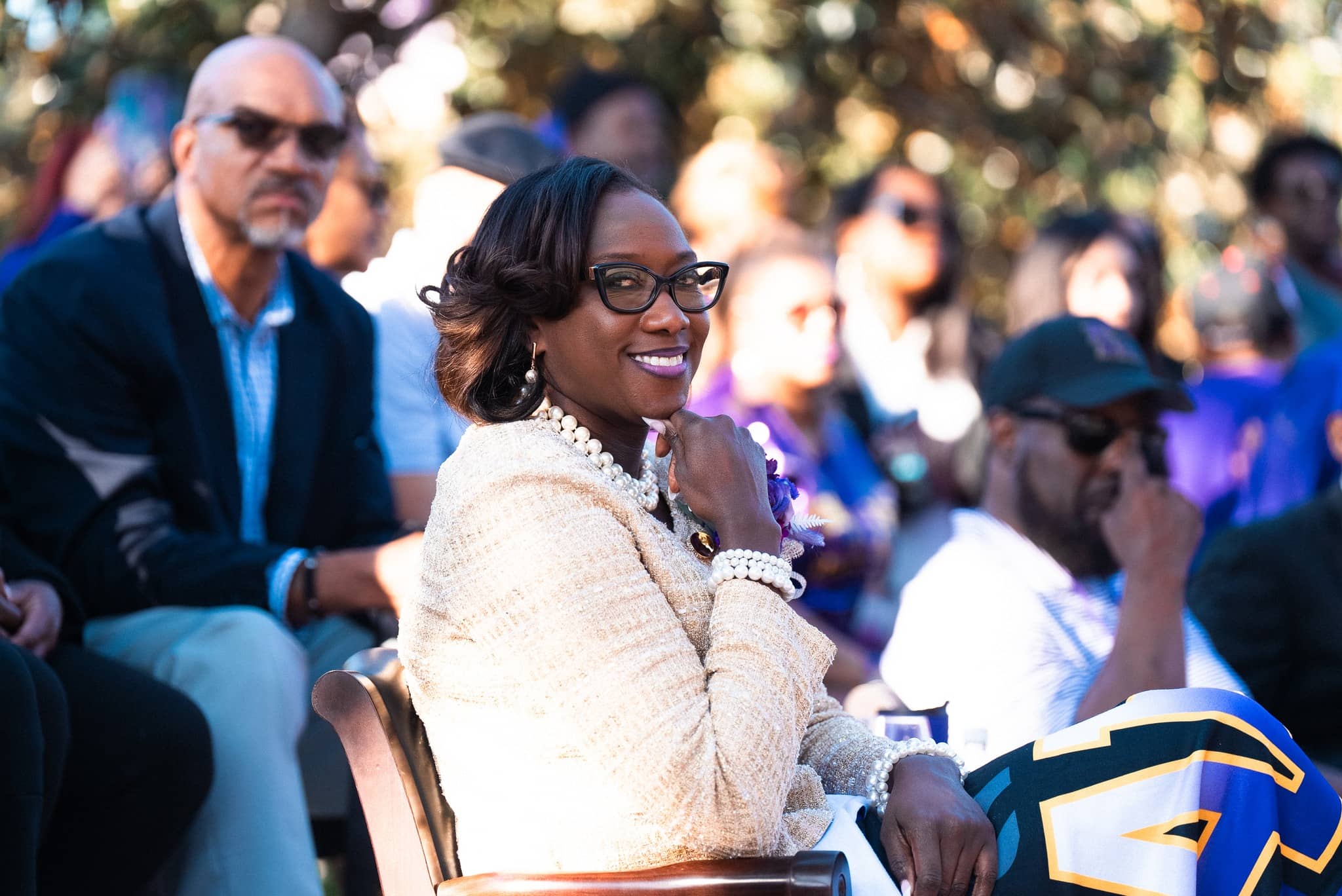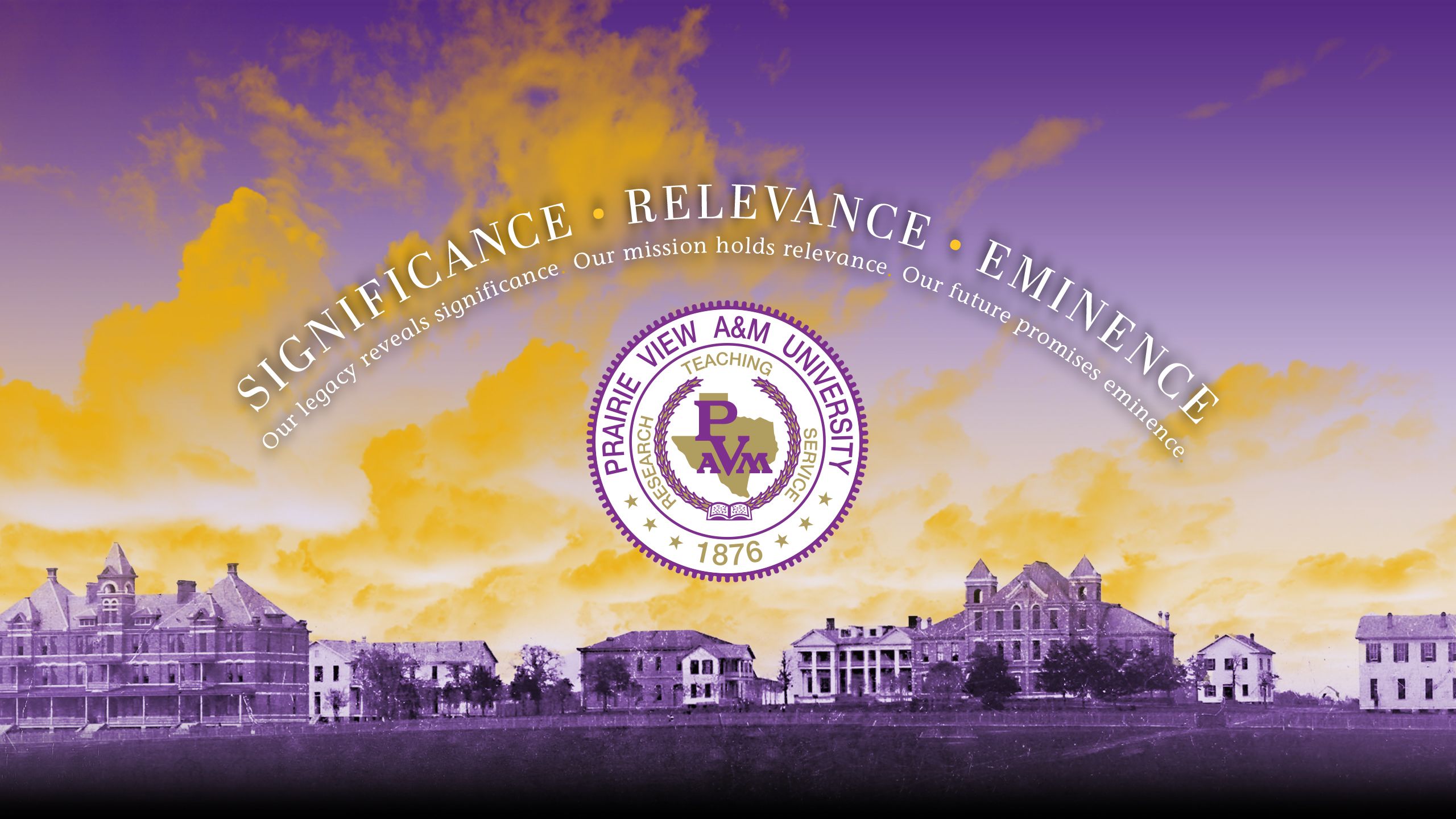
When Prairie View A&M University was founded in 1876 as the Alta Vista Agricultural and Mechanical College of Texas for Colored Youth, no one could have predicted that the University would one day become a top-producing source for African American engineers, nurses, teachers and community leaders. Nor could they imagine a woman standing at the University's helm of leadership.
In those days, most women in the U.S. did not work outside the home. According to the Census Bureau, 20% of all women worked, with just 5% of married women working outside the home.
However, women have played pivotal roles in shaping PVAMU's identity and mission, breaking barriers and shattering stereotypes. While women have been vital to the success of PVAMU, it took over 140 years to elect the first female president.
Now, amid Women's History Month 2024, Dr. Tomikia P. LeGrande will be inaugurated as the second woman to hold the title. Following a lineage of brave leaders, she's accepted the call. She looks forward to adding her chapter to PVAMU's story and continuing the upward trajectory of excellence.
"Excellence lives at Prairie View A&M University. We prepare our students to be life-long learners. We research to discover solutions to global problems. We are committed to student success, not only while they matriculate but post-graduation and beyond. So, we must be open and agile enough to chart new paths. In doing so, we will honor tradition and legacy while breaking free of constricted modes of thinking to respond to new opportunities and challenges without limitations," said Dr. LeGrande.
During her ceremonious inauguration on March 22, 2024, she will be formally sworn in as the ninth president of PVAMU.

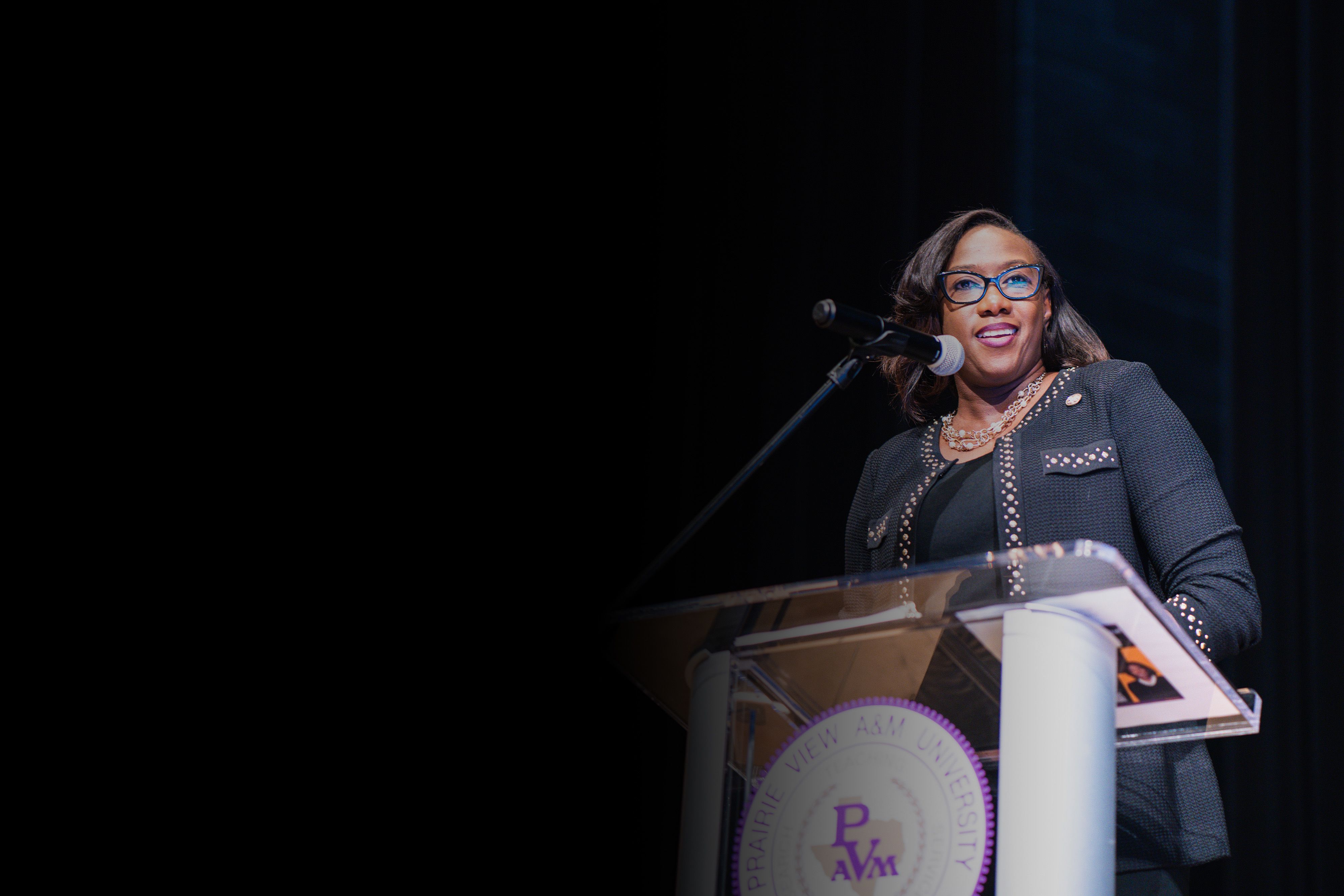
Passing the Baton from One Trailblazer to the Next
The success and growth of Prairie View A&M University have been the direct result of fearless and forward-thinking leadership. From the pioneering efforts of its earliest principals to the vision of its modern presidents, each leader left an indelible mark on the University's legacy.
In 1862, the Morrill Land-Grant College Act set aside land for colleges to educate students in agriculture and mechanical arts. This Act founded the Agricultural and Mechanical College of Texas (now Texas A&M University) in 1876. However, under the new U.S. Constitution, the institution had to be inclusive to African Americans. In forming its allegiance to the United States, Texas amended its constitution to abolish slavery and permit some “civil rights to freedmen,” but schools remained segregated.
Texas petitioned the federal government to open a separate school for Black students and selected a three-person commission to find the location. They purchased the Alta Vista Plantation for $15,000 and cemented Alta Vista Agricultural and Mechanical College of Texas for Colored Youth as Texas’ second oldest public higher education institution.
Only a few years distant from slavery, it was believed that African Americans did not possess the intellect or skill to lead a school on their own. The Board of Directors of the A&M College at Bryan managed the campus operations and administration. For 70 years, the institutions shared a president, and a principal was appointed at Prairie View to oversee daily activities.

L.W. Minor, 1878
L.W. Minor, 1878
L.W. Minor was PVAMU's first principal. Hired by Texas A&M President Thomas Gathright, the educator from Mississippi led the first year on a conservative budget.
Classes commenced on March 11, 1878, with eight young men. Minor’s staff included a grounds caretaker and cook, and amongst the early instructors were brothers E.H. and Lauren Cecil (L.C.) Anderson.
Still, under his leadership, the students had a successful school year until the onset of the cotton-picking season, which brought conflict, and many returned home to support their families.

E.H. Anderson, 1879-1884
E.H. Anderson, 1879-1884

L.C. Anderson, 1884-1894
L.C. Anderson, 1884-1894
For the next 15 years, Principals E.H. Anderson and L.C. Anderson, respectively, led curriculum development, grew enrollment, and maneuvered through the political tides that often swayed the institution. Eventually, the school adopted the “normal” program and changed its name to Prairie View State Normal School in 1879 and later to the Agriculture & Mechanical Department to Prairie View Normal School in 1887. Though funding remained inconsistent and insufficient, and the school faced daily threats, the faculty and leadership stayed the course, dedicating themselves to preparing students and aiding the next generation of thought leaders and changemakers.
In the following decades, PVAMU continued to develop and thrive under principals who faced segregation, financial constraints and societal glass ceilings.

Edward L. Blackshear, 1895-1915
Edward L. Blackshear, 1895-1915
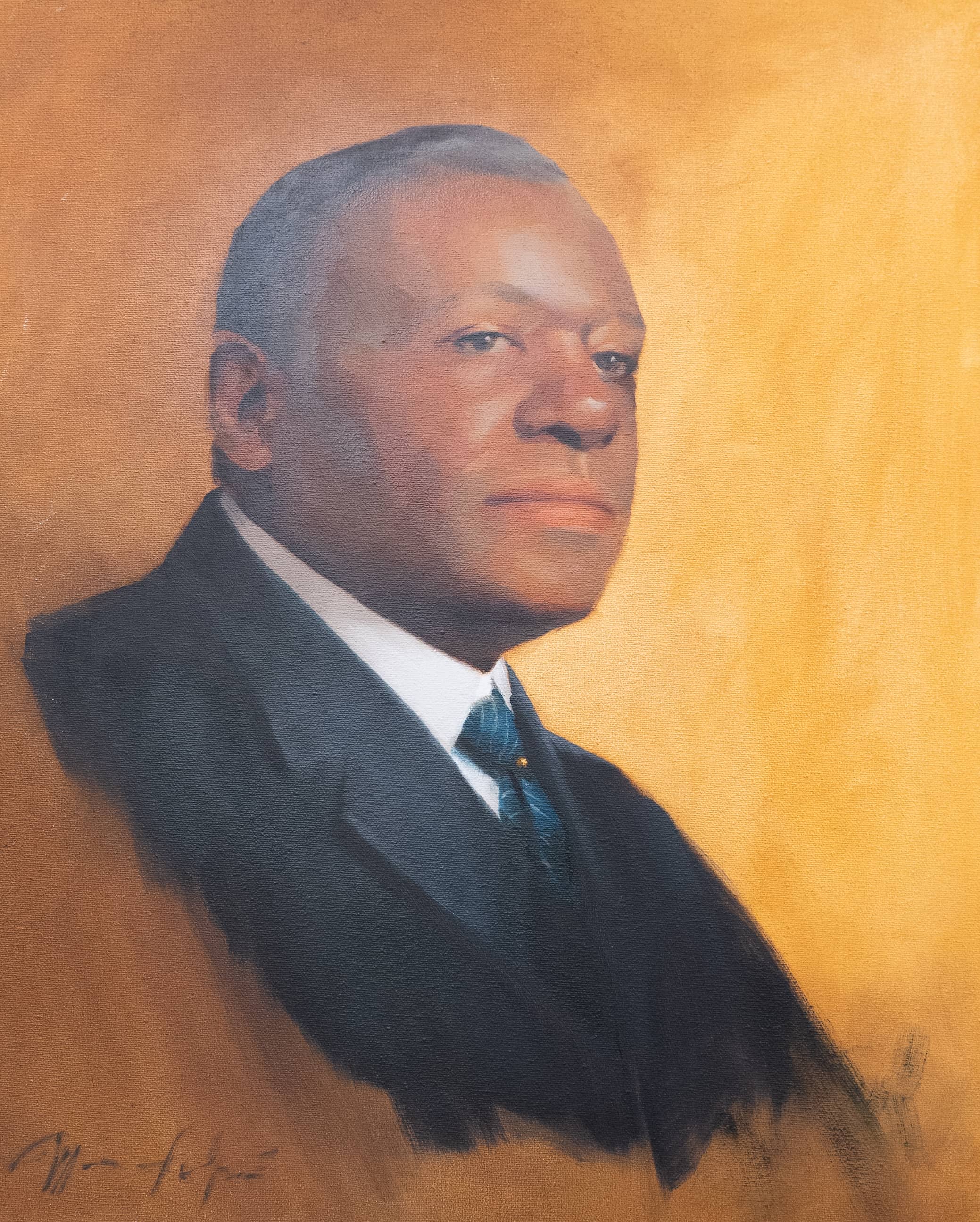
Isaiah M. Terrell, 1915-1918
Isaiah M. Terrell, 1915-1918
Edward L. Blackshear, Isaiah M. Terrell, J.G. Osborne and Willette R. Banks each played pivotal roles in shaping the University's identity, advancing infrastructural and programming expansion, cultivating campus life and extracurricular activities and fostering a culture of social responsibility.

J.G. Osborne, 1918-1925
J.G. Osborne, 1918-1925

W.R. Banks, 1926-1947
W.R. Banks, 1926-1947
They brought a sense of determination, diverse skills and a vast array of knowledge as practicing physicians, politicians and former military. Many were fellow HBCU graduates, connected by a shared vision of what PVAMU could be and a commitment to elevating students and faculty. Their efforts improved learning and engagement and elevated the campus as a hub for education and community progress in Texas.
Before Banks' retirement in 1947, the 49th Legislature authorized calling Prairie View a "University."


Dr. Edward B. Evans, 1947-1966
Dr. Edward B. Evans, 1947-1966

Dr. J.M. Drew, 1966
Dr. J.M. Drew, 1966

Dr. Alvin I. Thomas, 1966-1982
Dr. Alvin I. Thomas, 1966-1982

Dr. Percy A. Pierre, 1983-1989
Dr. Percy A. Pierre, 1983-1989

Lieutenant General Julius W. Becton, Jr. (Ret.), 1989-1994
Lieutenant General Julius W. Becton, Jr. (Ret.), 1989-1994

Dr. Charles A. Hines, 1994 - 2002
Dr. Charles A. Hines, 1994 - 2002

Dr. George C. Wright, 2003-2017
Dr. George C. Wright, 2003-2017

Dr. Ruth J. Simmons, 2017-2023
Dr. Ruth J. Simmons, 2017-2023
The rapid change in the title of the executive head of Prairie View from Principal to President marked a new era of efficiency and autonomy throughout Texas.
In 1947, the eighth principal, Dr. Edward B. Evans, became the institution's first African American president. His tenure marked an era of significant evolution, including full accreditation. Furthermore, Dr. Evans was pivotal in breaking down the segregated divide between the campus and the surrounding county.

Dr. Edward B. Evans, 1947-1966
Dr. Edward B. Evans, 1947-1966

Dr. J.M. Drew, 1966
Dr. J.M. Drew, 1966
His retirement in 1966 triggered the appointment of Dr. J.M. Drew. Dr. Drew became ill shortly after taking office, leading to Dr. Alvin I. Thomas being elected as the third president of PVAMU.

Dr. Alvin I. Thomas, 1966-1982
Dr. Alvin I. Thomas, 1966-1982
Coining the University's slogan, "Prairie View Produces Productive People," Dr. Thomas understood the University's role in shaping the Black Revolution and thought. He established the first HBCU Naval Reserve Officers Training Corps (ROTC) regime and a radio station. He integrated the residential concept to ensure students had access to everything they needed to compete and influence the ever-evolving political and economic landscapes.
The office of the PVAMU presidency changed hands in the following decades.
Despite fiscal and sometimes governance limitations, PVAMU’s chief administrators successfully transformed the former plantation into a first-class institution. Notable accomplishments include the launch of the Cooperative Extension Services, the first nursing program west of the Mississippi River to accept Black students, a veterinary hospital, a graduate studies division, an engineering school, and an honors college, in addition to expanding course and advanced degree offerings and numerous structural renovations.
PVAMU’s stewardship continued to guide the school’s growth and transformation. A significant feat was the 1984 amendment to the State Constitution, declaring Prairie A&M University an “institution of the first class,” establishing its claim to its share in the Permanent University Fund for the first time in the 106-year history of The Texas A&M University System.

Dr. Percy A. Pierre, 1983-1989
Dr. Percy A. Pierre, 1983-1989
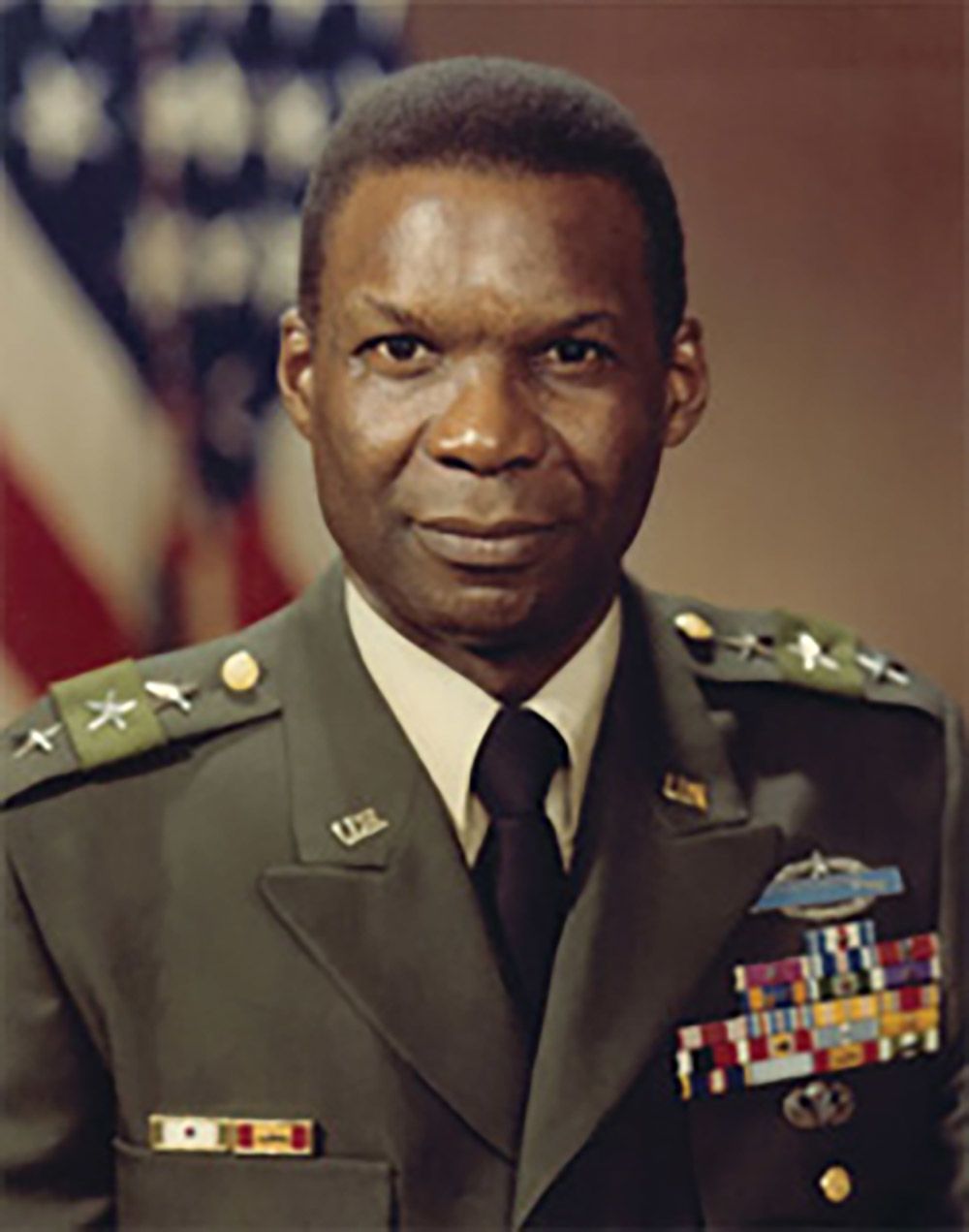
Lieutenant General Julius W. Becton, Jr. (Ret.), 1989-1994
Lieutenant General Julius W. Becton, Jr. (Ret.), 1989-1994
Dr. Percy A. Pierre understood the new era PVAMU was entering and was instrumental in developing and implementing the 1983 Target 2000 Report and Texas Plan. This plan strategically directed the University’s short and long-term expansion, including the Roy G. Perry College of Engineering and Technology, a new gymnasium and the addition of a pedestrian mall on campus.
The administration of Lieutenant General Julius W. Becton, Jr. (Ret.) (the first alum elected president) improved fiscal operations, which increased student enrollment and elevated the University as the top employer in Waller County.

Dr. Charles A. Hines, 1994 - 2002
Dr. Charles A. Hines, 1994 - 2002

Dr. George C. Wright, 2003-2017
Dr. George C. Wright, 2003-2017
When led by Dr. Charles A. Hines, PVAMU settled the Office of Civil Rights dispute, resulting in the signing of the Priority Plan and the construction of numerous academic programs and facilities. So, when Dr. George C. Wright stepped into the role, the groundwork had been laid, and he took the University further by establishing doctorate programs in education, engineering, nursing and juvenile justice.
In his 14-year tenure, he diversified the campus culture with an international affairs office and a study abroad program. He even stepped in front of the classroom to help lighten the faculty’s load amidst budget cuts.

Dr. Ruth J. Simmons, 2017-2023
Dr. Ruth J. Simmons, 2017-2023
When Dr. Ruth J. Simmons became president in 2017, she was the first woman to hold the coveted position. Her prominence, deep-driven passion and unwavering commitment to diversity and inclusion advanced PVAMU's success on the national stage.
Affectionately nicknamed "Ruth the Truth," Dr. Simmons deployed innovative techniques to improve PVAMU's financial stability and visibility. Her efforts resulted in an endowment increase of 40%, numerous partnerships and successful fundraising efforts, as well as the addition of the African American Studies program, the new engineering classroom and research building, and the School of Public and Allied Health, to name a few.
Dr. Simmons helped propel the University to new heights in academia and community impact. Most importantly, she broke barriers and paved the way for the future women leadership on PVAMU's campus.
"Excellence lives at Prairie View A&M University. It always has. It always will."
Dr. Tomikia P. LeGrande
"Significance…Relevance...Eminence"
"The Inauguration theme reflects our intentionality in esteeming our legacy, staying true to our mission and strategically envisioning our future. The vision is clear—Prairie View A&M University will be a premier public research-intensive HBCU that serves as a national model for student success. Excellence lives at PVAMU. It always has. It always will."
Against the backdrop of a month dedicated to celebrating the achievements and contributions of women throughout history, Dr. LeGrande's inauguration marks a significant milestone in the University's journey toward unapologetic excellence and inclusivity.
Throughout her professional trajectory, Dr. LeGrande's dedication to empowering and developing leadership at all levels and her success in procuring funds to support programmatic acceleration, implementation and innovation has garnered her a reputation as a goal-driven thought leader who prioritizes the needs of students, faculty and staff. Utilizing reform, restructuring and policy development, Dr. LeGrande champions educational equity, student accessibility and financial affordability.
Dr. LeGrande hails from Savannah, Georgia, a community immersed in cultural values and traditions. Early in her childhood, she learned everyone has something to give—time, effort, talent, resources and knowledge.
She pursued her bachelor's in chemistry from Savannah State University, a master's in chemistry from North Carolina A&T State University and a doctorate in higher education administration from Texas Tech University.

In her studies, she discovered the racial and gender disparities in STEM (science, technology, engineering and math). She became an activist, using her voice to push causes into the forefront of discussion and reform. In her academic journey, Dr. LeGrande gained a comprehensive new perspective, confidence, courage and understanding of herself as a Black woman and later professional.
Chancellor John Sharp recommended Dr. LeGrande as the final presidential candidate in November 2022, acknowledging that her experience and success in enrollment management and student development is precisely what the campus needs to further the groundwork laid by Dr. Simmons.
As a two-time HBCU graduate, Dr. LeGrande is excited to broaden her understanding of campus traditions and the PVAMU student experience. In approaching the role from a spirit of service and community responsibility, she insists that she is not merely leading a higher education institution but building upon a legacy that impacts the great state of Texas.
Though her tenure has just begun, her exceptional marriage of analytical skills and unique leadership style has helped her position the University to lean into its strengths. She leverages the institution's history, her skills and a solution-based framework to aid student success and access to quality education.
Dr. LeGrande takes her responsibility of transforming students into changemakers seriously and aligns fiscal resources with the University's priorities. She admits that prioritizing competing needs, such as student housing, faculty training and support and fundraising, is challenging, but she is confident. She knows that with each decision, the aspirations and courage of past leaders are with her.
Using data and storytelling to bring the PVAMU narrative to life and push the campus into uncharted spaces, she seeks to nurture a "culture of care" where every student can thrive academically, personally and professionally. Dr. LeGrande implemented formal listening sessions to give the campus and surrounding community a space to share feedback and perspectives on current and future initiatives, providing insight into what the University is doing well and areas of improvement.
Dr. LeGrande believes her most vital asset is listening. The world is changing, and students are no exception. Having navigated her path as a first-generation college student, she seeks to ease the journey for students like herself, including minorities, low-income and other marginalized groups, so they know they are not alone.


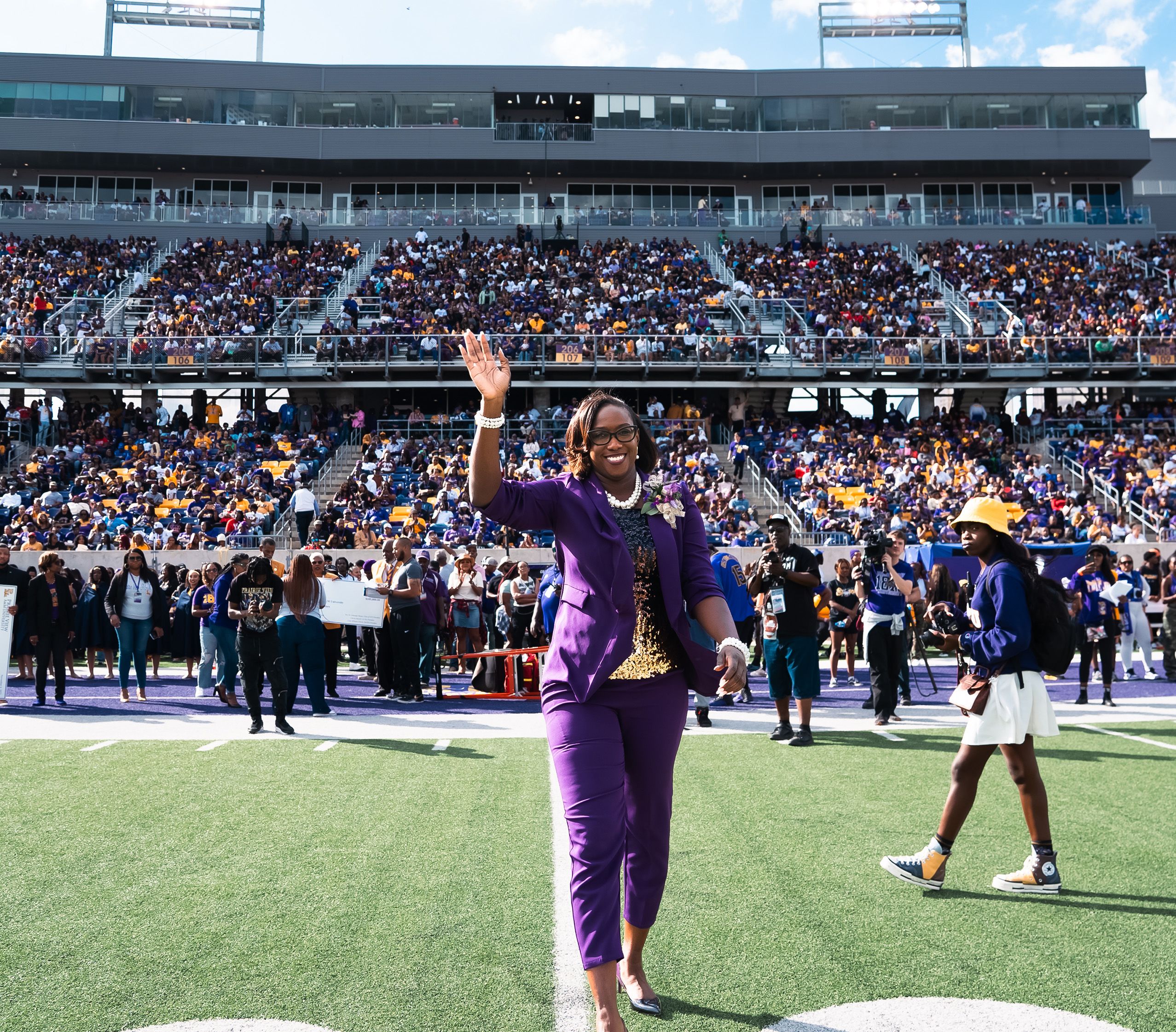
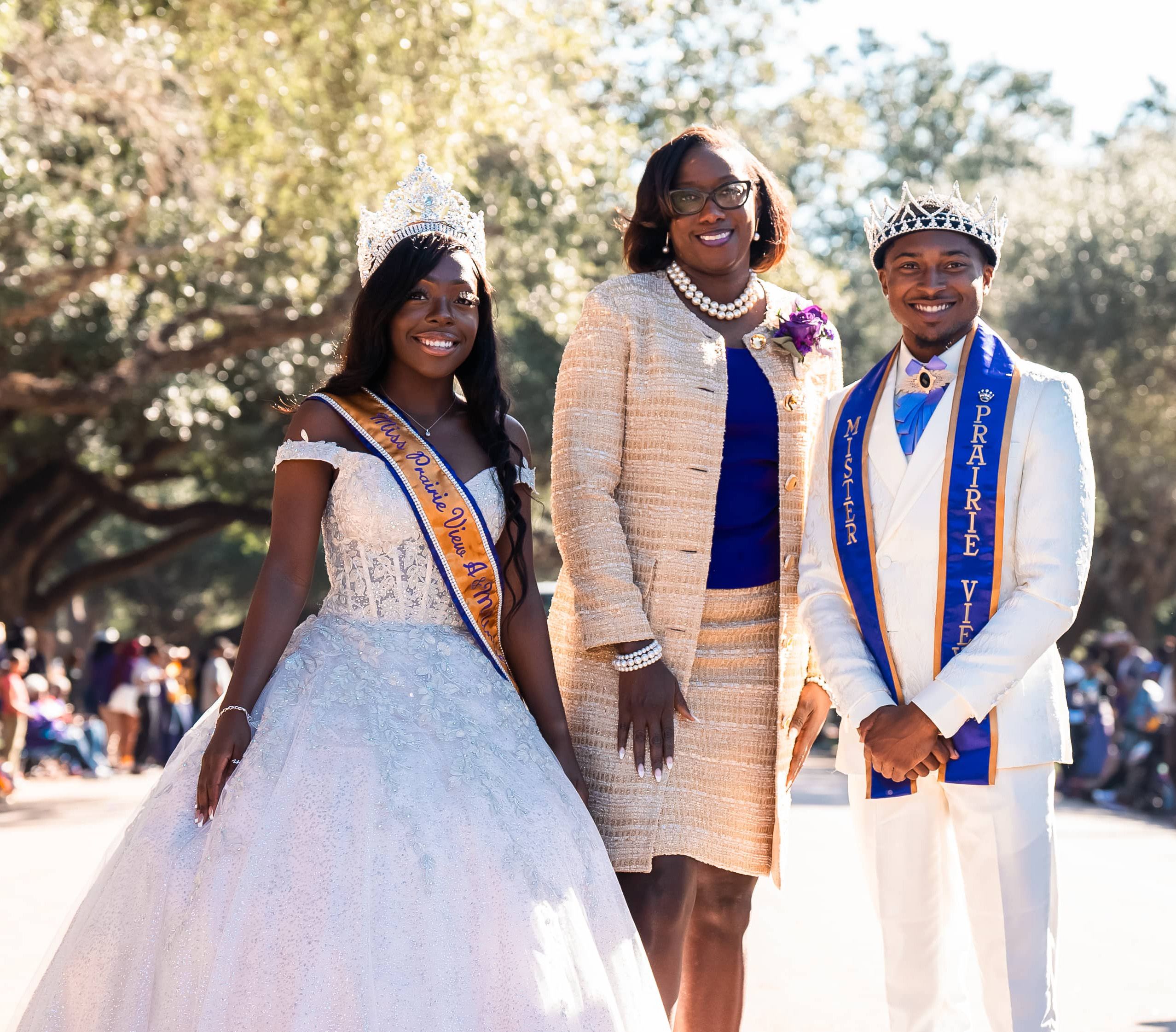
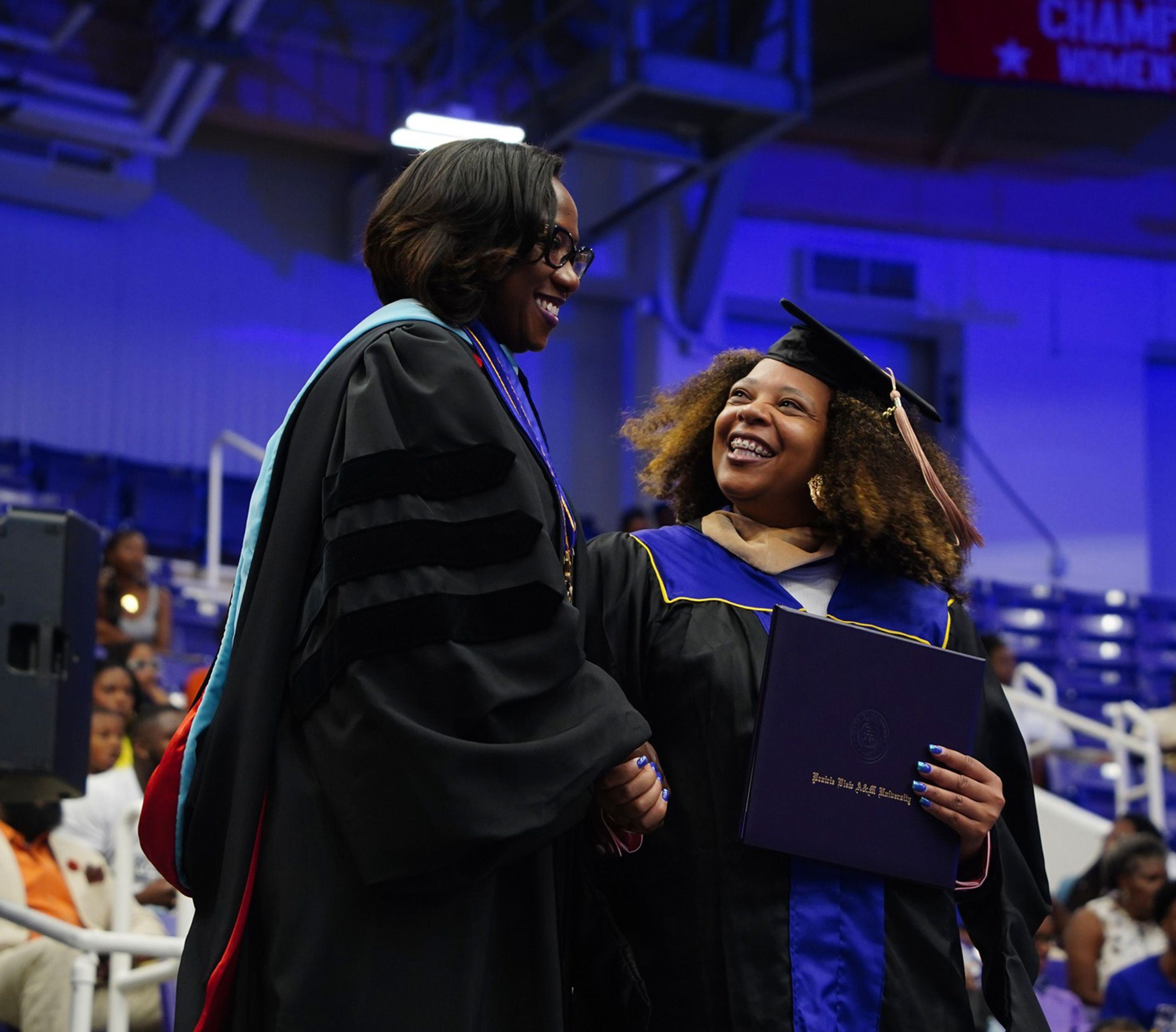
The Future is Female
Dr. LeGrande is president of the illustrious Prairie View A&M University. But the titles she's most proud of are those who speak to who she is as a woman and human: daughter, sister, aunt and life partner.
Women's History Month serves as a poignant reminder of the invaluable contributions that women have made to the institution, the PVAMU community and the world.
PVAMU's resilience is a testament to the determination and commitment of principals and presidents who navigated the highs and lows of economics, politics and racial challenges, strategically leading the institution and shaping history. Today, women presidents have taken the reigns. On the heels of Dr. Simmons' gracious departure, Dr. LeGrande is infusing her passion and knowledge to elevate and guide PVAMU into a promising future.
With her in-depth expertise in "strategic planning, technology implementation, change management and policy and business process redesign," Dr. LeGrande has undoubtedly made history as one of the youngest presidents of Prairie View A&M University.
Given her expansive vision for PVAMU— solidifying the University's R2 status in a quest to achieve R1, deepening relations and engagement with friends of PVAMU, improving graduation rates, implementing a customer service model that supports all students and their intersecting identities, and encouraging activities that foster a sense of belonging, confidence and self-agency - her tenure is poised to be one of the most memorable.
This story is a part of Excellence Lives Here, led by the Office for Marketing and Communications at Prairie View A&M University.
